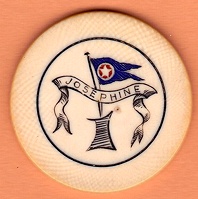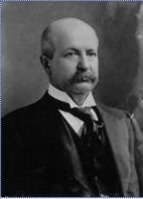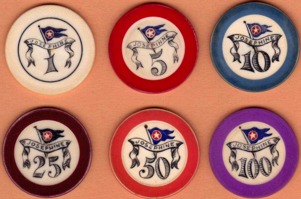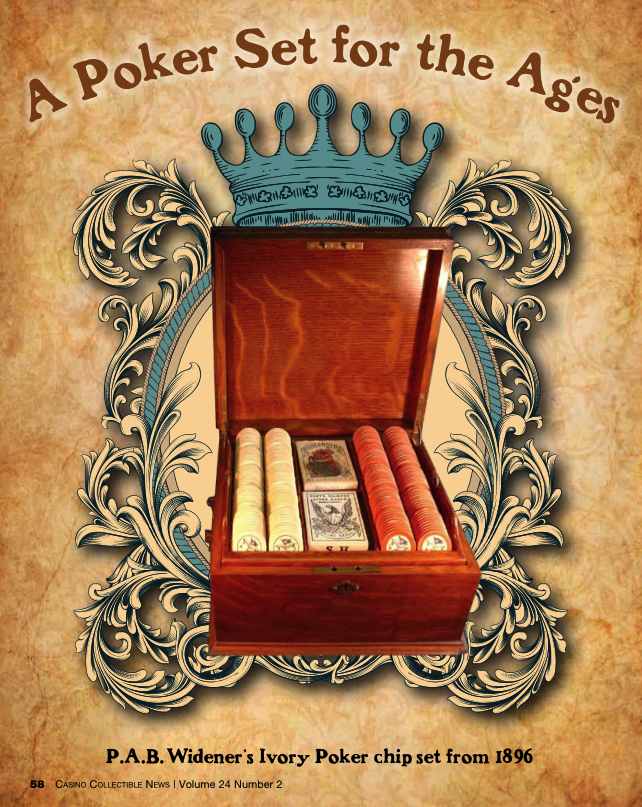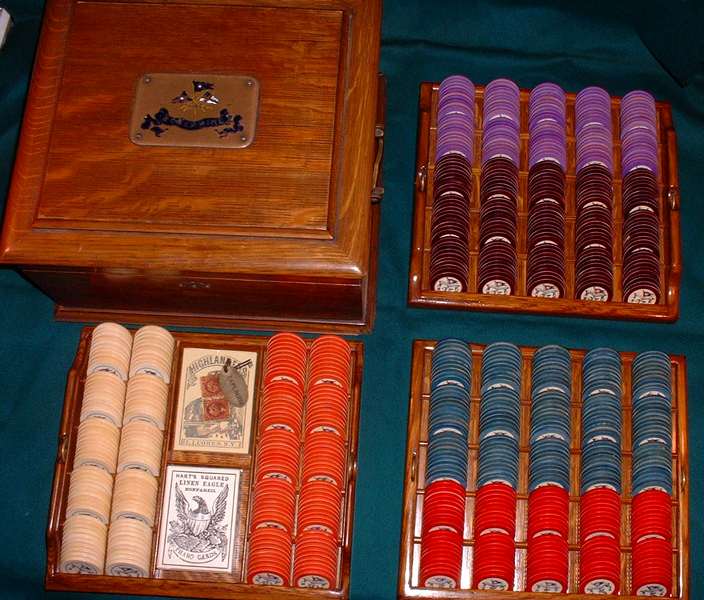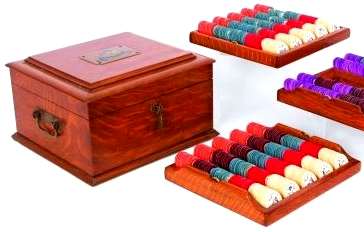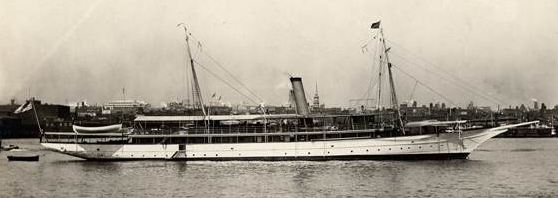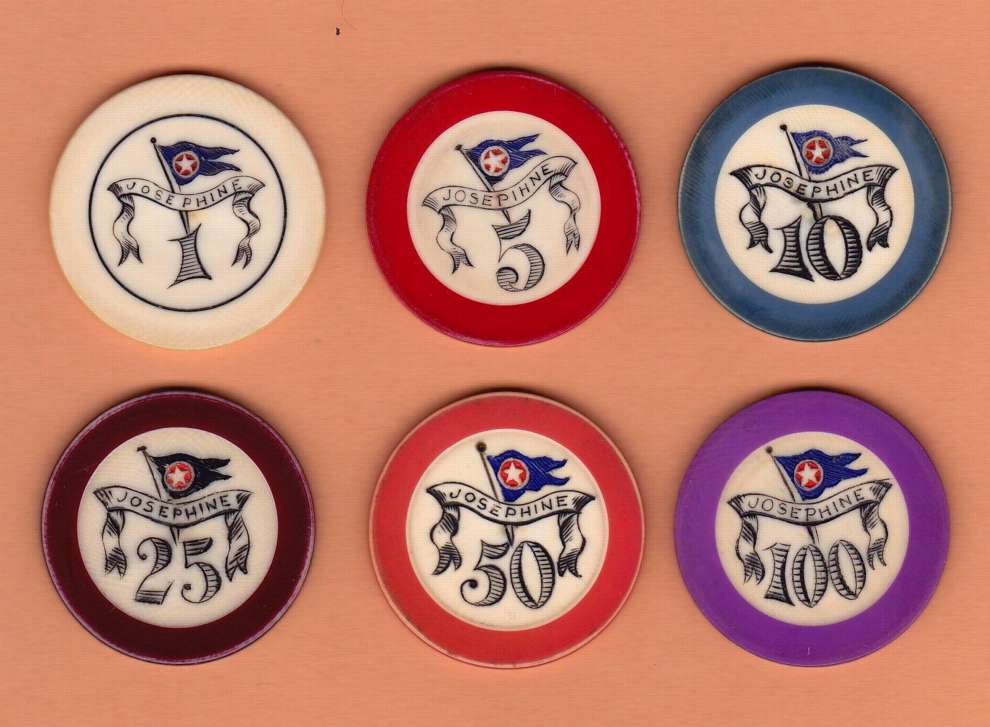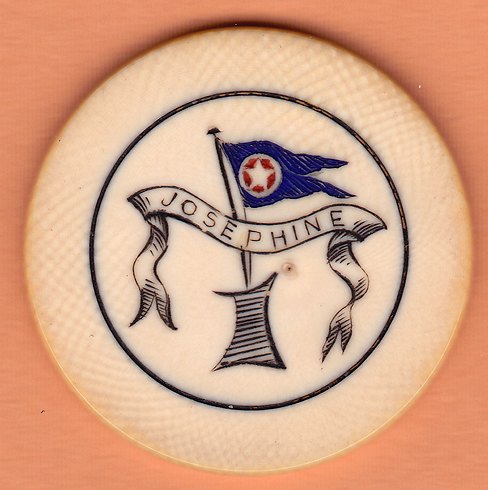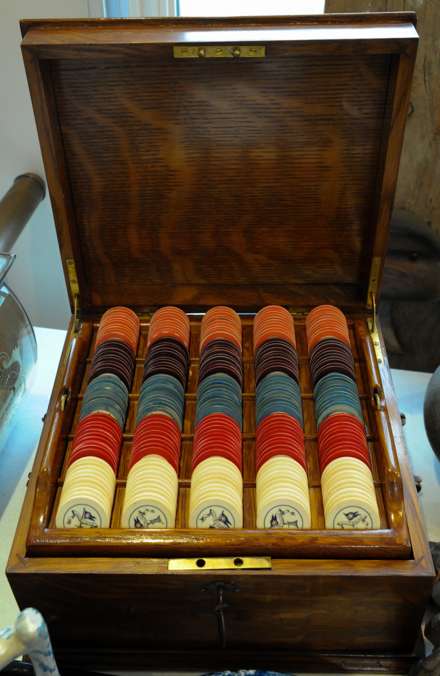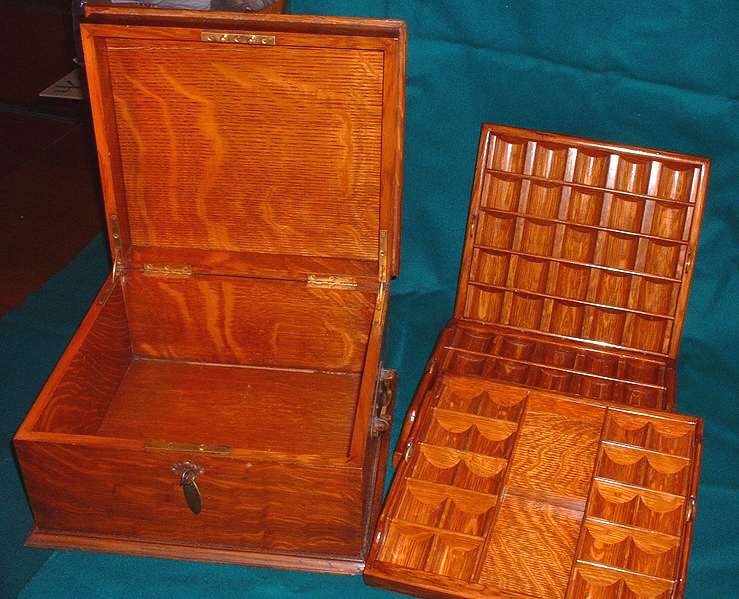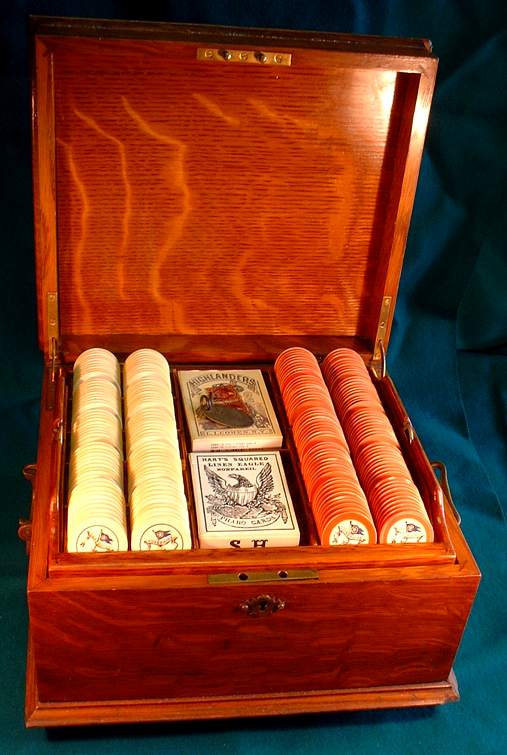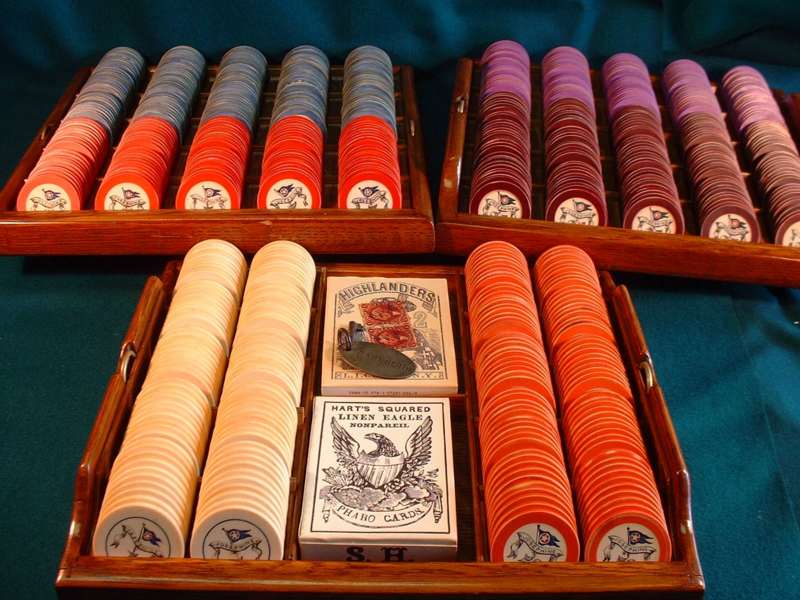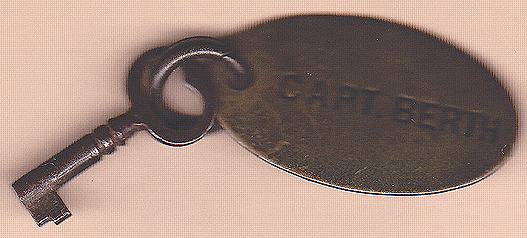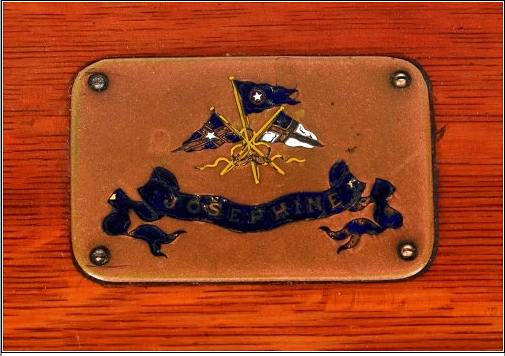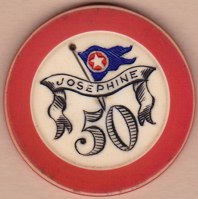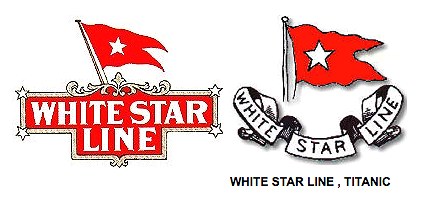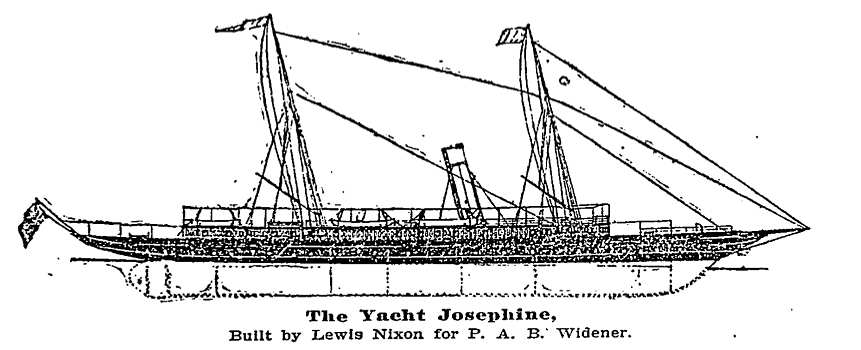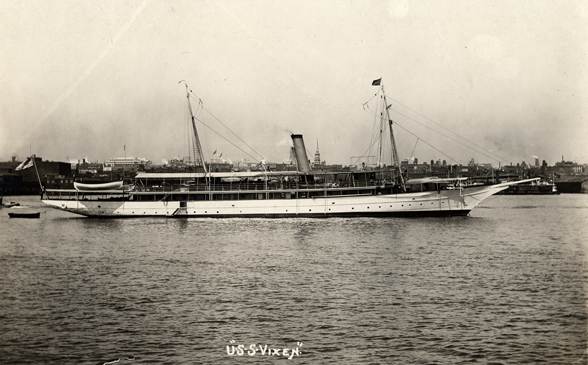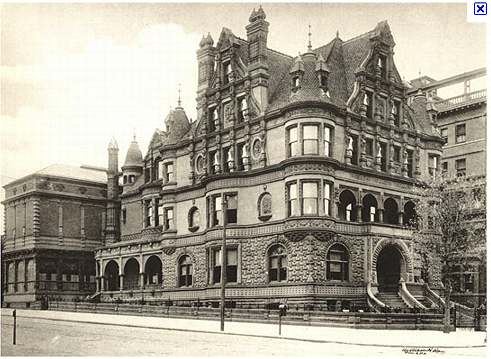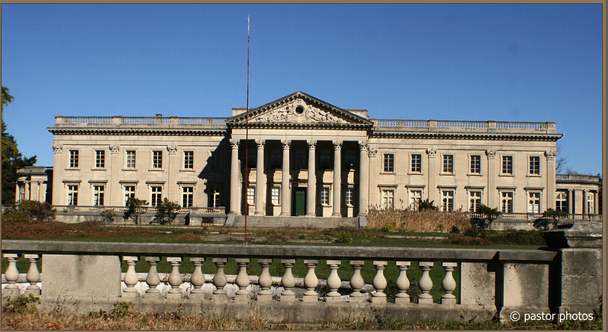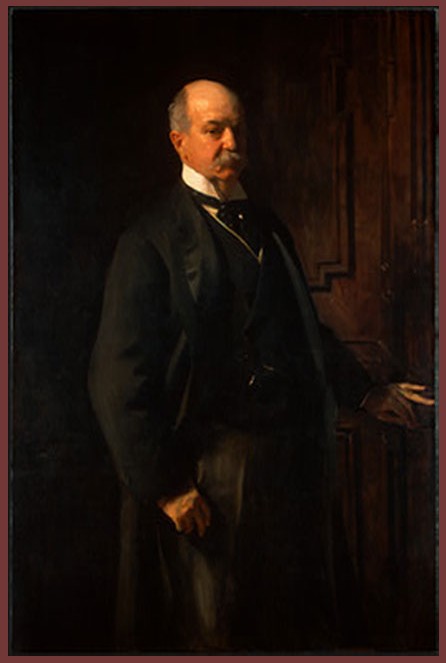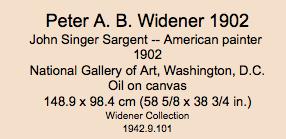White Star and
Titanic and Widener Family
The
white stars on these flags (burgees) tie
much together. PAB Widener was part owner
of the famous White Star [Shipping] Line, which
had, of course, a white star in its flag (burgee
logo). In 1896 he had built his 225-foot
yacht Josephine, which was registered with his (and his son
George D. Widener's)
personal flag (seen on the chips), which also had a prominent
white star in the design. In 1912, George and
his son Harry were among the honored guests for the maiden
voyage of the White Star Line's doomed "Titanic;" they
died in that disaster. George had traveled to Paris,
France, with original intentions to find a chef for Widener's
new Philadelphia hotel, The Ritz Carlton. Harry Elkins Widener, the son, a noted
book collector, had gone to Europe, in part, to purchase
rare books; his widowed mother built the Harry Elkins Widener
Memorial Library, at Harvard, the largest university library
in the world, in his memory. (The rare books young Elkins purchased
in Europe were sent home on another ship, and are
now in that Harvard library named after him!)
PAB Widener's
other son, Joseph E. Widener
(1871 � 1943), was a wealthy American art collector
who was a founding benefactor of the National Gallery
of Art in Washington, D.C. A major figure in Thoroughbred
horse racing, he was head of New York's Belmont Park and
builder of Miami, Florida's Hialeah Park racetrack (often called
"the most beautiful racetrack in the world"), and owned numerous
horse stables, championship horses and racing tracks. The
March 16, 1942 issue of TIME magazine said: "nearly every glamor
horse in the U.S. was entered in Florida's Widener Handicap, richest
race of the winter season." At Belmont Park in New York, the "Widener
Turf Course" is inside the main tack.
Another
notable descendent of PAB Widener is Fitz Eugene Dixon, Jr. (1923 � 2006),
an American educator, sportsman, and philanthropist.
He served on university boards, art commissions and
owned many thoroughbred racehorses including part ownership
of Man o' War. He is best known as an "owner and investor
of Philadelphia professional sports franchises, including
the Eagles, the Phillies, the Flyers, and the Wings,
but his most notable sports investment was the Philadelphia
76ers. He served as Vice Chairman for the Flyers when they
won the Stanley Cup in 1974, 1975. In 1976 Dixon purchased
the Philadelphia 76ers from Irv Kosloff for $8 million and a few months
later brought Julius "Dr. J." Erving to the team for $6.6 million."
The following excerpts are from this
work :
Titanic disaster
-- Titanic captain partied with the Wideners
just before hitting the iceberg! : "Among
the many myths surrounding the Titanic
is that the ship's captain, Edward J. Smith, was drunk
when the ship rammed the iceberg. Smith had in fact
attended a dinner party a few hours before the crash
-- hosted by the Widener family -- where alcohol was undoubtedly
served, but there is no evidence that the captain
had anything to drink. " [PAB Widener was not aboard the
Titanic, but his son and grandson were, and died there.]
PAB Widener ownership in White Star Line:
" ... ... Widener family patriarch,
Peter Arrell Brown (PAB) Widener, was part-owner
of the Titanic. The Titanic was the flagship of the
White Star Line which was owned by International Mercantile
Marine (IMM)... ..... White Star was owned [too]
by Oceanic Steam Navigation Company. All Oceanic Steam
Navigation shares, except six shares individually held, were
owned by the International Navigation Company, which in
turn was controlled by Fidelity Trust Company of Philadelphia,
a holding company. All the International Navigation
company's stock was actually owned by IMM, whose president
was J. Bruce Ismay, and among whose officers were five
"voting trustees": Ismay, Charles Steele, William J. Pirrie,
J.P. Morgan, and P.A.B. Widener." (Wow,
what if these guys were handling the "Josephine" poker chips!)
|

